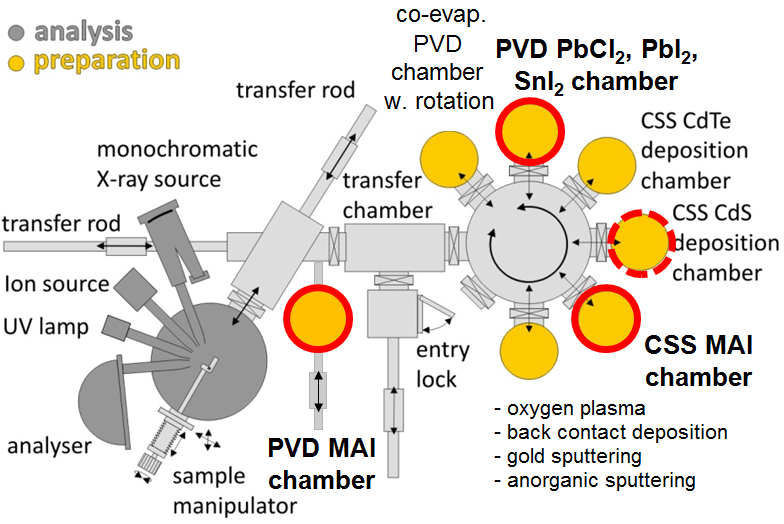DAISY-SOL Setup


The DAISY-SOL cluster tool (DArmstadt Integrated SYstem for SOLar Research) is currently directed to CdTe and perovskite thin-film solar cells. However, the system can be easily modified for other solar cell materials.
The independent deposition chambers are based on a flexible design and can be easily modified, thus enabling step-by-step film and interface growth under maximized experimental control (the chambers are based on UHV technology). If necessary, the defined addition of extra chemicals can also be included. It can be used for fundamental studies, for example, with the help of the analysis system (VG ESCALAB 250), providing state-of-the-art surface-analysis techniques, including monochromatized X-ray photoelectron spectroscopy (XPS), ultraviolet photoelectron spectroscopy (UPS), low-energy ion-scattering spectroscopy (LEISS), sputter-depth profiles and laterally resolved XPS mapping.
In addition, with the given deposition and processing chambers (closed-space sublimation (CSS), physical vapor deposition (PVD), magnetron sputtering, plasma-enhanced chemical vapor deposition (CVD), wet processing, adsorption) all of the steps needed to produce solar cells can be performed, which also allows the manufacturing of complete solar cells to be optimized.
The circular transfer chamber offers the advantage that any deposition sequence can be realized: therefore substrate (back-contact down) as well as superstrate (TCO front-contact down) solar cells can be easily prepared in the same set-up including, if needed or wanted, additional processing and deposition steps inbetween.



